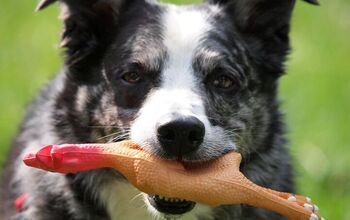Borkie


About Borkie
The Borkie, which is a cross between the Yorkshire Terrie r (Yorkie) and the Beagle, shouldn’t be confused with the Bichon Frise/Yorkie mix (Yorkie Bichon).
Also referred to simply as a Yorkie/Beagle Mix, these loving and fun dogs are a combination of the most adorable features of Yorkies and Beagles, so they’re hard to resist. They also make wonderful family dogs, so it’s no wonder that they’re so popular.
Despite their positive traits, these dogs can also be quite vocal and high-strung, so check out some fast facts about the Borkie below so you can determine if this breed would be the right addition to your family.
The Borkie is a cross between the Yorkshire Terrier (Yorkie) and the Beagle.
The Borkie is a designer crossbreed from the United States.
The Borkie is a cross between a purebred Beagle and Yorkshire Terrier.
Borkies have a lot of energy, and they enjoy being active, so they will need a canine-appropriate diet that will provide enough animal-based protein and carbohydrates.
You can feed your Borkie 1½ to 2 cups of a high quality dry food divided into two servings per day. This should give your pooch the energy that he needs, without risking him becoming overweight or obese.
The Borkie has a desire to learn new things, so these dogs can be easy to train.
The Borkie has a desire to learn new things, so these dogs can be easy to train, but you should be patient and consistent because Borkies will become easily distracted. Keep training sessions short and interesting, and also use positive reinforcement for the best results.
You should focus on obedience training so that your Borkie won’t become distracted. Focus on teaching your dog commands like freeze, sit, come, stop, etc. The younger, you start, the better, so if you get your Borkie as a puppy, start training him to follow commands and walk on a leash. Using a firm tone and establishing yourself as the pack leader, while using praise and rewards that encourage and motivate, will ensure your dog will learn quickly.
Borkies are also receptive to learning tricks, which can be a lot of fun for both of you. You can, for example, teach your little dog to dance, to stand on his hind legs to grab a treat, or to balance, walk in circles, etc.
A small-sized breed, the Borkie weighs between 20 and 25 pounds.
Borkies are a lot of fun to be around, and they’re dogs that are sure to bring a smile to your face. They love to play and they’re high-energy canines. On the downside, though, these dogs can also be high-strung, so you’ll need to give your pet plenty of toys and exercise so that all of that energy can be released in positive ways.
Overall, a Borkie is a wonderful companion that enjoys getting loads of attention, following you around, and sleeping with you. Your dog will love snuggling up to you and cuddling, and he’ll also like making friends with new people. These curious dogs are smart and social, so they don’t make good watchdogs.
You should take note that Borkies are known for barking a lot, and they can even howl like Beagles. If you live in an apartment where the barking would be bothersome to neighbors, this breed may not be the best fit.
Because the Borkie is a hybrid breed, this dog could be susceptible to the health problems that commonly affect its parent breeds.
Some health concerns for the Borkie include eye conditions, ear infections, hip dysplasia, collapsed trachea, hypoglycemia, patellar luxation, Beagle dwarfism, hypothyroidism, epilepsy, intervertebral disk disease, and portosystemic shunt (PSS).
However, there’s no guarantee that your dog will end up suffering from any of those problems. Every dog is different and its long-term health is ultimately impossible to predict.
The Borkie has an average lifespan of 10 to 13 years.
Borkies are high-energy dogs that thrive on being active every day. Therefore, you need to be certain that you’ll have the time to spend playing with your dog and giving him the exercise that he requires.
A long walk or a jog every day is a great place to start, though you can also provide hours of playtime indoors with the appropriate dog toys.
These dogs will happily entertain themselves if allowed to play inside the house or in an enclosed and safe backyard.
Borkies are a lot of fun to be around, and they’re dogs that are sure to bring a smile to your face.
The Borkie is not recognized by the American Kennel Club, as it is considered to be a hybrid breed. However, this breed is recognized by the Designer Breed Registry (DBR) and the International Designer Canine Registry (IDCR).
Borkies feature silky coats that are curly and long, so regular grooming sessions will be necessary to remove excess fur and keep the coat smooth and free of matting. It’s a good idea to trim your dog’s coat every two months. In between professional trimmings, you should comb the coat two or three times a week.
Borkies are small dogs when they are adults, so they will be tiny when they are puppies. Extra care should be taken to ensure your puppy is handled gently and will not be at risk of injuries.
Start socializing your puppy so that he will be able to get along with other pets and children, and start training your puppy to obey commands, walk on a leash, and follow the rules of your home. Before you know it, you will have a well-adjusted adult dog who loves you unconditionally and is happy to please you.
Photo credit: arenacreative/Bigstock

Lisa Selvaggio is a freelance writer and editor, and our resident cats-pert, with certifications in pet nutrition and pet first aid. She enjoys producing content that helps people understand animals better so they can give their pets a safe and happy home.
More by Lisa Selvaggio

























